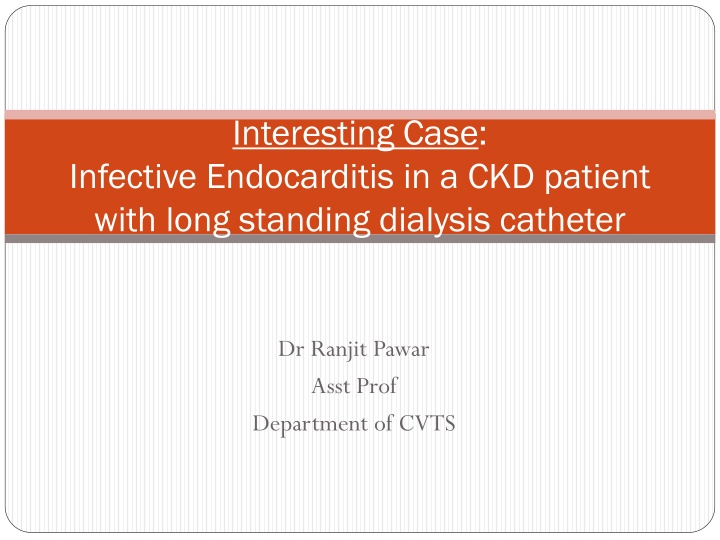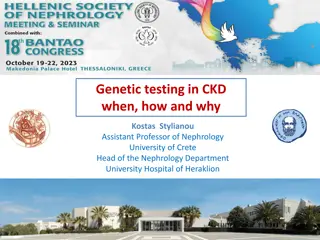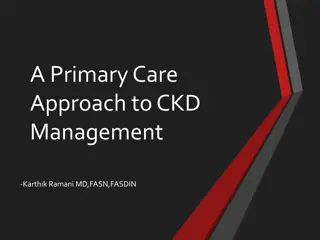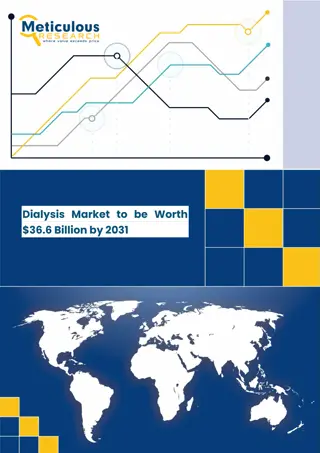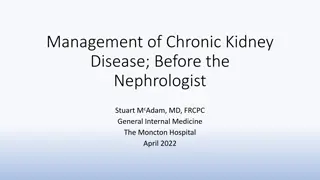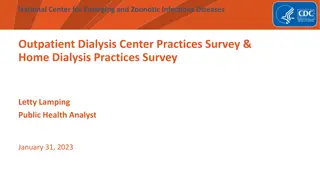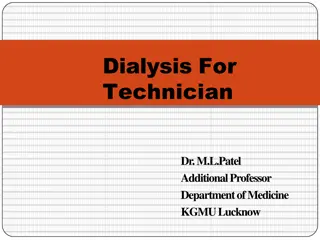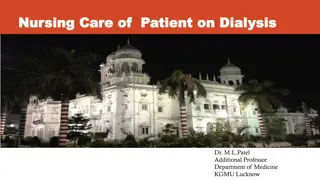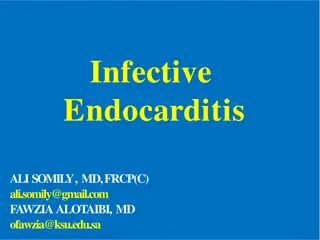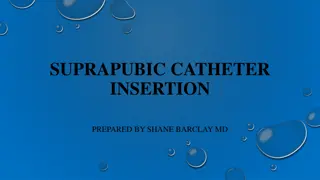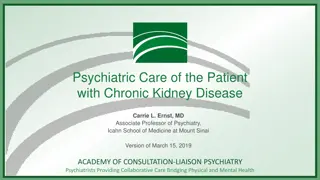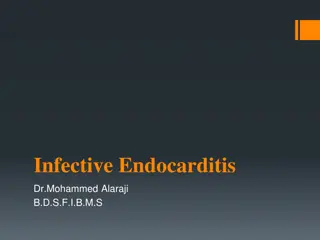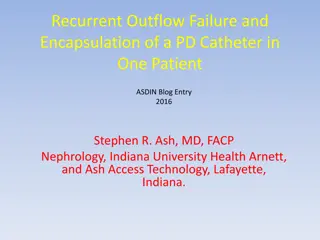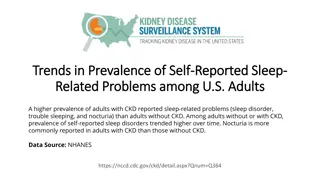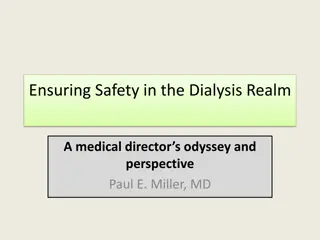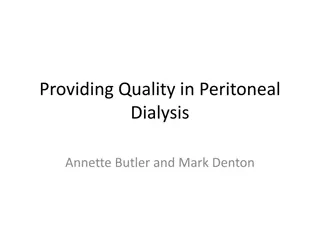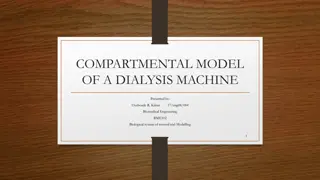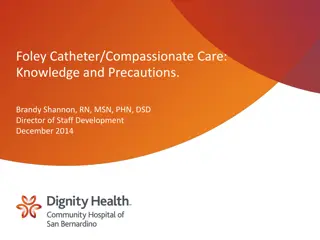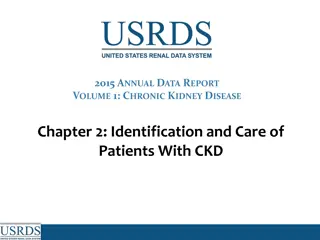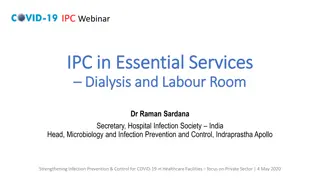Case Study: Infective Endocarditis in CKD Patient with Dialysis Catheter
A detailed case study of a 39-year-old male with CKD stage V on hemodialysis presenting with infective endocarditis. Highlights include clinical findings, echocardiography results, treatment approach, surgical intervention, and outcomes.
Download Presentation

Please find below an Image/Link to download the presentation.
The content on the website is provided AS IS for your information and personal use only. It may not be sold, licensed, or shared on other websites without obtaining consent from the author.If you encounter any issues during the download, it is possible that the publisher has removed the file from their server.
You are allowed to download the files provided on this website for personal or commercial use, subject to the condition that they are used lawfully. All files are the property of their respective owners.
The content on the website is provided AS IS for your information and personal use only. It may not be sold, licensed, or shared on other websites without obtaining consent from the author.
E N D
Presentation Transcript
Interesting Case: Infective Endocarditis in a CKD patient with long standing dialysis catheter Dr Ranjit Pawar Asst Prof Department of CVTS
Case Details 39 Yr old Male K/c/o CKD stage V d On maintenance hemodialysis since 1 Yr through Permacath (Rt Subclavian vein) C/O: Swellings on both legs X 1 mth Low grade fever on & off X 15 days Difficulty in breathing X 15 days DOA-8/3/21
Examination Details HR- 102/min, BP- 86/40 mm hg CVS- S1,S2 N; No murmur RS- b/l crepts+ CXR- b/l lung field basal haziness Hb- 4.2, TLC- 5300, PLT- 131000 79% Neutrophilia Urea- 109; Sr Creat- 11.33 Serology- Negative Blood culture- Methicillin sensitive Staph auerus
Echocardiography Trans Thoracic echo (9/3/21): EF 60% Vegetation on mitral Valve-AML 13X8 mm, PML- 11X9 mm Moderate Mitral regurgitation, No AR, TR. No PAH TEE (12/3/21): MV vegetation confirmed Additional vegetation's at SVC catheter tip near SVC- RA junction Diagnosis- Sub acute Bacterial Endocarditis
Medically optimized Anemia correction Inj Pipercillin+ Tazobactum X 7 days Continued on Hemodialysis Transferred to CVTS- Surgery planned Vegetectomy with MV repair/replacement Euro Score: 10 (Predicted mortality 14-19%)
Surgical Details Underwent Surgery on 18/3/21 Intra Op- Dense pericardial adhesions Large Heart, dilated thickened RA, dilated RV Catheter tip thrombosed with vegetations at tip MV- 1cm vegetation sitting at A2 segment; PML was nearly destroyed , rolled up due to vegetations
Vegetectomy along with excision of permacath done. Rest of catheter pulled out percutaneously MV was beyond repair. MV excised & replaced with 27 mm TTK Chitra Single disc Mechanical prosthesis.
Excised Mitral Valve Excised Mitral Valve Excised Excised Permacath Permacath tip tip AML with vegetation at tip PML destroyed with vegetation
Post Op Course Started with Inj Meropenem Inj Vancomycin Inj Tigecycline Inj Fluconazole Inotropes: Dopamine 5 mcg/kg/min Noradrenaline 0.1 mcg/kg/min Vasopressin- 2U/hr all in renal dosage
Elective ventilation for 72 hrs, gradually weaned off , extubated on NIV support Renal Management along with Nephrologist: Dialysis on POD-0,1,2, alternate day Inotropes weaned over 4 days Drains removed on POD-7th Transferred back to Nephro on POD 10th Daily thereafter
Fever on & off intermittently Increasing dyspnoea since POD 12th CXR- B/l pleural effusion USG Chest- Moderate Pleural effusion ( Rt > Lt) Pulmonary medicine opinion sought; B/l ICD insertion done Deranged coagulation profile, Vit K, FFP given Persistent fever
Noted altered sensorium on POD 15th Neurologist Opinion sought- Suspected Embolic stroke- Advised CT CT Brain: Multiple embolic stroke (? Septic) Minimum hemorrhage ?? Cortical Laminar Necrosis Persistent Sepsis, Deteriorating hemodynamics, started on Nor ad, Dopa infusion Pt was reintuabted on POD 22nd, Succumbed to septic shock & died on 11/4/21 (POD 24th)
Take home points: Infective endocarditis is a known complication with long standing i.v. catheters such as dialysis catheter Early mortality associated with IE ranges from 15-20%, with reported operative mortality for active endocarditis 4-30% Higher mortality with incremental risk factors like older age, renal dysfunction, longer CPB time, insidious onset of infection A team approach with involvement of multiple specialties is necessary in patients with multiple comorbidities
Operative treatment is actually Combined Medical+ Surgical treatment Indications for surgery: Remove Restore or reconstruct Reverse the hemodynamic abnormality Repairs are less successful in active endocarditis than in healed stage Few patients may have continuing sepsis despite adequate cardiac operation, Peripheral mycotic aneurysms can be a potential source
